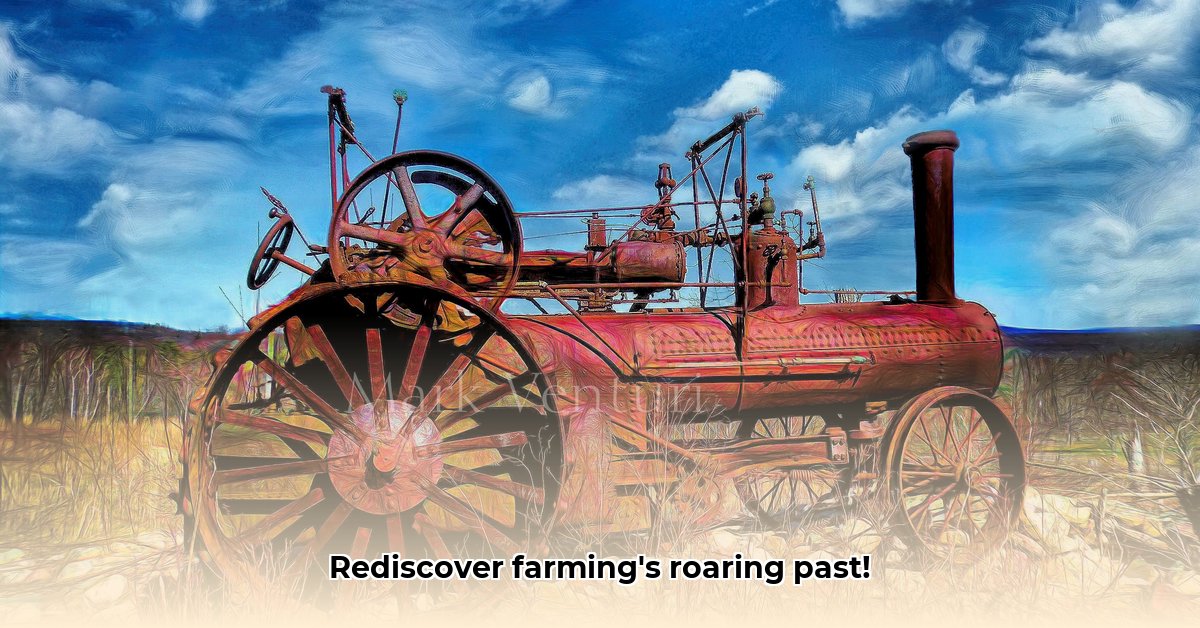
Imagine a time before the ubiquitous roar of diesel engines dominated the agricultural landscape. Picture instead, massive, clanking steam-powered machines—antique steam tractors—chugging across fields, transforming farming practices. These incredible feats of engineering revolutionized agriculture, but their dominance was ultimately short-lived. This article explores their rise and fall, examining their intricate mechanics, their profound impact on society, and the reasons behind their eventual replacement by internal combustion engines. We'll delve into their remarkable engineering, the individuals who operated them, and their enduring legacy, visible today in museums and the collections of dedicated enthusiasts who keep these giants of the past alive. For sale listings of antique tractors, check out this site.
The Iron Horses of the Fields: How They Worked
Antique steam tractors weren't simply farm implements; they were powerful symbols of progress. These behemoths, often belching steam and rumbling across the fields, fundamentally altered early 20th-century agriculture. Their power source? A boiler generating high-pressure steam that drove a reciprocating engine (a piston-driven engine, essentially a giant steam-powered pump). This engine then transferred its power, via a complex system of gears and shafts, to the wheels and various implements, enabling farmers to cultivate land on an unprecedented scale.
Early models were often stationary, requiring repositioning after each pass. However, advancements led to self-propelled giants capable of navigating fields with greater ease, thanks to features like power steering and differentials. These machines were built for specific tasks: some for plowing, their massive plows effortlessly tearing through the earth; others specialized in threshing, separating grain from its stalks. Technological improvements—stronger materials, smarter designs—resulted in fewer breakdowns and easier operation and maintenance, directly translating to increased farm productivity. Farmers could cultivate larger areas in less time, leading to significantly higher crop yields.
A Historical Perspective: Rise and Fall of the Steam Giants
Antique steam tractors marked a pivotal moment in history. The early 20th century witnessed a critical labor shortage in rural areas, and horse-drawn equipment couldn't meet the demands of expanding farms. Steam power provided a solution—the brute force needed for efficient large-scale cultivation. Their impact was as significant as the automobile's on personal transportation; they fundamentally reshaped farming, enabling cultivation of larger areas and increased harvests. But their reign was relatively short. The internal combustion engine (ICE) emerged as a formidable competitor, offering advantages such as greater fuel efficiency, simpler maintenance, easier fueling (no need for water for the boiler), and readily available fuel. While steam tractors persisted in specific regions and tasks (like community threshing events), the ICE rapidly became the preferred choice for most farmers.
Regional Differences: A Tale of Two Farms
The effectiveness of antique steam tractors varied greatly depending on geography and soil conditions. In North America's vast, flat plains, these machines thrived, their efficiency on large-scale farms undeniable. However, in Great Britain, heavy, wet soils presented considerable challenges; steam tractors often struggled in muddy fields, resulting in lower productivity compared to their North American counterparts. This disparity reveals a crucial insight: groundbreaking technological advancements aren't universally effective; environmental factors greatly influence a technology's success.
The Lasting Legacy: More Than Just Metal and Steam
Despite their relatively brief dominance, antique steam tractors left a lasting legacy. Beyond agricultural modernization, they reshaped social interactions. "Threshing rings," community events where farmers shared resources and steam-powered threshing machines, fostered neighborly cooperation and support. Today, these majestic machines are prized collector's items and museum exhibits, tangible reminders of a remarkable era of agricultural innovation and engineering ingenuity.
How Did Soil Conditions Impact Steam Tractor Adoption Rates in Early 20th Century Agriculture?
"The success of a steam tractor was inextricably linked to its ability to effectively work the land," explains Dr. Amelia Hernandez, Agricultural Historian at the University of California, Berkeley. "Heavy clay soils, common in many parts of Europe and the eastern US, proved incredibly challenging. When wet, these soils became extremely sticky, causing wheels to sink and resulting in decreased efficiency and increased downtime."
Conversely, lighter, sandier soils facilitated greater traction and higher adoption rates. This directly impacted the economic viability of steam tractors. In areas with difficult soils, higher operating costs often negated the benefits over horse-drawn equipment. This understanding reveals the complex interplay between technology, environment, and economic factors in shaping agricultural practices. The story of the antique steam tractor serves as a powerful reminder of the continuous evolution of technology and its profound impact on society.